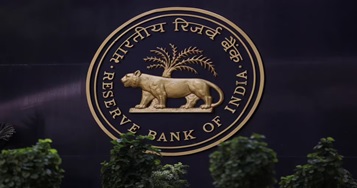28 September, 2025
Payments Regulatory Board (PRB)
Fri 03 Oct, 2025
Introduction
- The Reserve Bank of India (RBI) has constituted a new six-member Payments Regulatory Board (PRB) to provide specialized oversight of India’s evolving and increasingly complex digital payments ecosystem. This move reflects the RBI's strategic push toward strengthening regulatory frameworks amid India’s emergence as a global leader in digital payments.
Why the PRB Was Needed
- Over the past decade, India’s payment systems have grown exponentially, led by innovations like UPI (Unified Payments Interface), Aadhaar-enabled Payment Systems, and Real-Time Gross Settlement (RTGS). With this surge, the need for a dedicated, autonomous, and agile regulatory body became apparent.
- Earlier, the Board for Regulation and Supervision of Payment and Settlement Systems (BPSS) was overseeing payment systems, but it functioned as a sub-committee of the RBI’s Central Board, limiting its independence and capacity to respond swiftly to dynamic changes.
What is the Payments Regulatory Board (PRB)?
- The Payments Regulatory Board (PRB) is a newly constituted, independent body within the Reserve Bank of India, empowered to regulate and oversee India’s payment and settlement ecosystem. It derives its legal authority from the Payment and Settlement Systems Act, 2007, which governs payment and settlement systems in the country.
Key Functions of PRB:
- Regulate, supervise, and promote efficient payment and settlement systems.
- Ensure consumer protection and data security in digital payments.
- Enhance transparency and financial stability.
- Promote innovation and inclusiveness in digital financial services.
Structure of the PRB
- The new board will have six members, comprising:
- The RBI Governor (Chairperson).
- The Deputy Governor in charge of payment systems.
- One officer from the RBI nominated by the Governor.
- Three external members appointed by the Central Government, representing expertise in:
-
- Law
- Information Technology
- Payment Systems/Finance
This ensures diverse representation, transparency, and cross-sectoral oversight.
The Department of Payment and Settlement Systems (DPSS), previously reporting to the BPSS, will now directly report to the PRB, reflecting a shift towards more functional autonomy and accountability.
Significance of the PRB
- Strengthens Oversight in a Booming Sector: India’s UPI recorded over 10 billion transactions in a month in 2024, highlighting the scale and complexity of operations. A dedicated board will ensure better real-time regulatory response.
- Enhances Independence: Unlike BPSS, which was internally managed, PRB’s independence and diverse composition will help mitigate regulatory capture and foster innovation.
- Aligns with Global Best Practices: Most advanced economies have independent payment regulators. PRB aligns India with global standards in digital finance governance, supporting its ambition to internationalize payment platforms like UPI.
- Encourages Public-Private Innovation: With industry experts on board, PRB will bridge the gap between private fintech innovation and public sector regulation.
- Boosts Cross-Border Payment Readiness: India is forging real-time payment linkages with countries like UAE and Singapore. PRB will ensure secure and standardized cross-border systems.
Challenges Ahead
- Coordination with other regulators like SEBI, TRAI, and MeitY will be crucial to avoid regulatory overlaps.
- Cybersecurity threats will remain a key challenge as payment ecosystems expand.
- Ensuring equity and access in rural and remote regions will require targeted interventions.
Conclusion
The establishment of the Payments Regulatory Board (PRB) marks a transformative step in India’s journey towards becoming a global fintech powerhouse. It introduces a more inclusive, transparent, and agile regulatory framework, better suited to the challenges and opportunities of a fast-evolving digital economy.


















